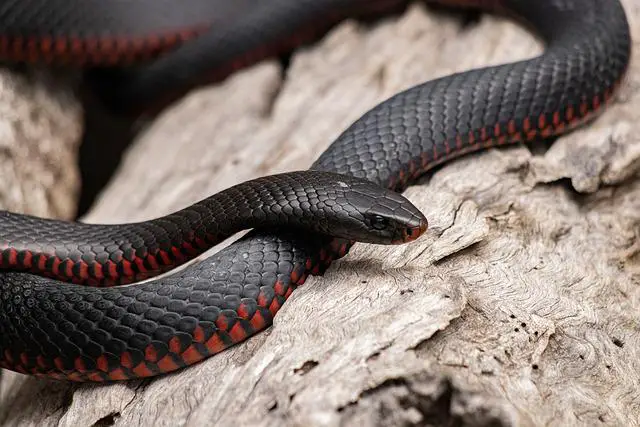The world would be a very different place without snakes. These creatures play an important role in the ecosystem, and their disappearance would have serious consequences. If all the snakes disappeared, the food chain would be disrupted, and many species of animals would suffer. Additionally, snakes are helpful in controlling rodent populations. Without them, there could be a major increase in the number of rodents running around. So what would happen if all the snakes disappeared?
Introduction
All animals play an important role in their ecosystems, and snakes are no exception.
These carnivorous reptiles help to keep populations of rodents and other small mammals in check, which can in turn help to prevent the spread of disease.
In addition, snakes provide a source of food for many predators, including birds of prey and other carnivorous animals.
If all the snakes in the world disappeared, it could have a ripple effect on many different species.
For example, without snakes to prey on them, populations of rodents and other small mammals would likely increase.
This could lead to more crop damage and an increased risk of disease outbreaks.
In addition, the loss of snakes would reduce the food available for many predators, potentially leading to population declines.
While it’s impossible to say exactly what would happen if all the snakes in the world disappeared, it is clear that they play an important role in maintaining balance in nature.
What would happen to the ecosystem if all the snakes disappeared?
If all the snakes disappeared from the ecosystem, it would have a ripple effect on the whole food chain.
Snakes play an important role in controlling populations of rodents and other small mammals.
Without snakes to keep them in check, these animals would quickly become overpopulated, leading to a shortage of food and competition for resources.
This would cause a decline in the population of larger mammals that depend on smaller prey, and could eventually lead to the extinction of some species.
In addition, snakes help to keep insect populations under control, which can help to prevent the spread of disease.
So while they may not be everyone’s favorite creatures, snakes play an important role in maintaining a healthy ecosystem.
How would people be affected if there were no snakes left on earth?
Snakes are an important part of the ecosystem, and their loss would have a ripple effect on the environment.
One of the ways snakes helps the environment is by controlling pest populations. Many species of snakes feed on rodents, which can damage crops and spread disease.
In addition, snakes help to keep the populations of other predators in check. For example, large constrictors help to control populations of pigs and deer, which can reduce the amount of deforestation. In addition, snakes play an important role in the food chain.
They are a source of food for many animals, including birds of prey, mammals, and other reptiles. The loss of snakes would therefore have a significant impact on the ecosystem.
What could be done to help prevent the extinction of snakes worldwide?
As any herpetologist will tell you, snakes are a vital part of the ecosystem. They help to control populations of rodents and other small mammals, which can damage crops and spread disease.
In addition, they play an important role in the food chain, providing food for a variety of predators.
However, snakes are facing a number of threats that could lead to their extinction.
One of the most significant threats is habitat loss. As human populations continue to grow, we are encroaching on more and more natural habitats, making it difficult for snakes to find places to live and hunt.
In addition, many snakes are killed each year by humans who either fear them or want to sell their skins. Finally, the illegal trade in wild-caught snakes is also taking a toll, as smugglers capture snakes from the wild and sell them to zoos and private collectors.
While the situation may seem dire, there are a number of things that can be done to help prevent the extinction of snakes worldwide.
One of the most important things is to educate people about the importance of these creatures and why they should be protected. In addition, stricter enforcement of wildlife laws is critical, as is increasing funding for conservation efforts.
Would life be better or worse without snakes around?
Snakes get a bad rap. It’s true that some snakes are poisonous, but the majority are not. In fact, snakes play an important role in many ecosystems.
They help to control populations of rodents and other small animals, which can otherwise devastate crops and spread disease.
What’s more, snakes are a vital source of food for other predators such as birds of prey and certain mammals. In short, snakes play a crucial role in keeping ecosystems in balance. Without them, the world would be a much different place – and not necessarily for the better.
Conclusion
If all the snakes in the world disappeared, it would have a profound impact on the ecosystem. Snakes play an important role in controlling the populations of rodents and other small mammals. Without snakes to keep them in check, these populations would explode, leading to a decrease in the amount of available food for other animals.
This would eventually lead to a decline in population levels for many species, including some that are important to humans. In addition, snakes help to keep venomous species such as cobras and vipers in check. If these species were left unchecked, they could inflict serious harm on humans and other animals. Therefore, the disappearance of snakes would have far-reaching consequences for the ecosystem as a whole.




